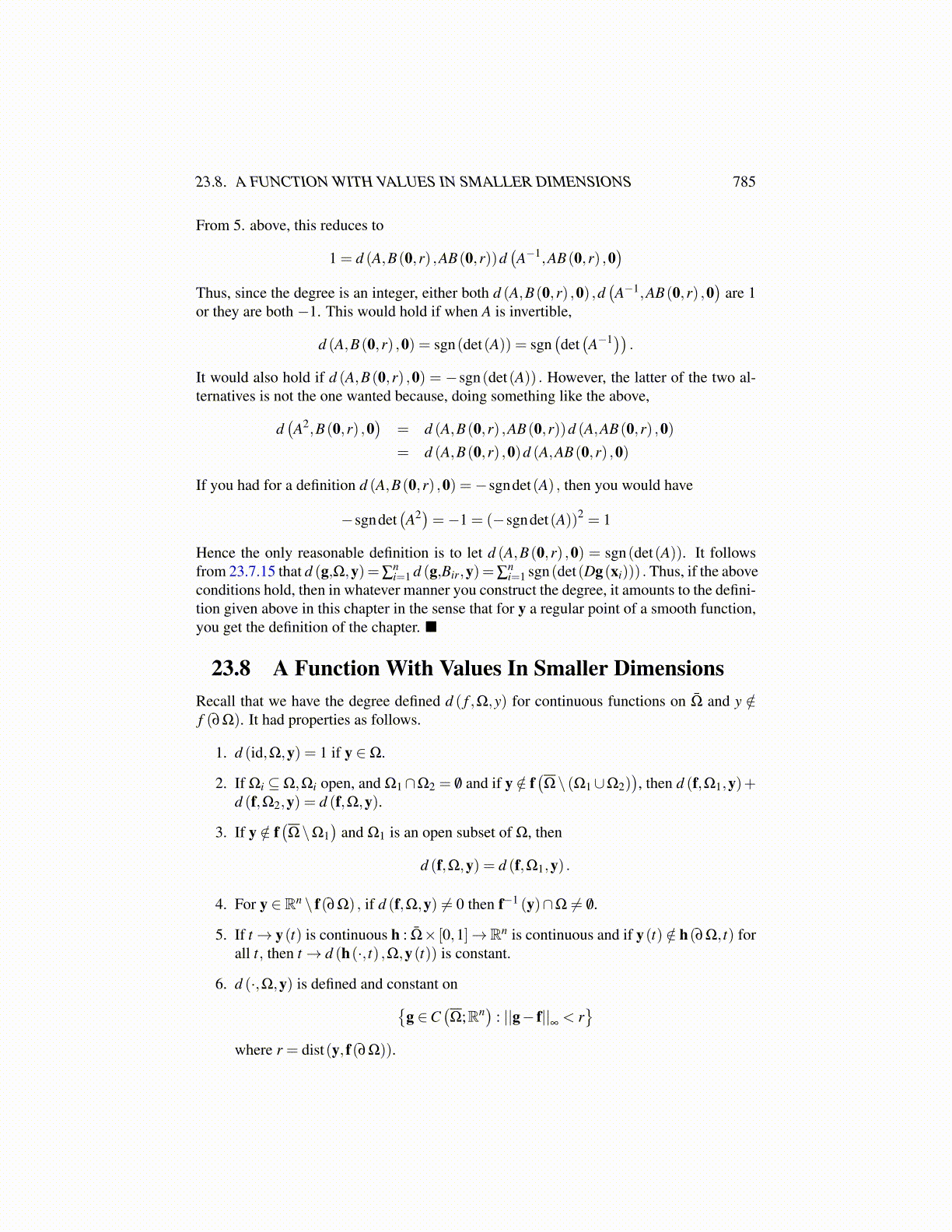
23.8. A FUNCTION WITH VALUES IN SMALLER DIMENSIONS 785
From 5. above, this reduces to
1 = d (A,B(0,r) ,AB(0,r))d(A−1,AB(0,r) ,0
)Thus, since the degree is an integer, either both d (A,B(0,r) ,0) ,d
(A−1,AB(0,r) ,0
)are 1
or they are both −1. This would hold if when A is invertible,
d (A,B(0,r) ,0) = sgn(det(A)) = sgn(det(A−1)) .
It would also hold if d (A,B(0,r) ,0) = −sgn(det(A)) . However, the latter of the two al-ternatives is not the one wanted because, doing something like the above,
d(A2,B(0,r) ,0
)= d (A,B(0,r) ,AB(0,r))d (A,AB(0,r) ,0)= d (A,B(0,r) ,0)d (A,AB(0,r) ,0)
If you had for a definition d (A,B(0,r) ,0) =−sgndet(A) , then you would have
−sgndet(A2)=−1 = (−sgndet(A))2 = 1
Hence the only reasonable definition is to let d (A,B(0,r) ,0) = sgn(det(A)). It followsfrom 23.7.15 that
d (g,Ω,y) =n
∑i=1
d (g,Bir,y) =n
∑i=1
sgn(det(Dg(xi))) .
Thus, if the above conditions hold, then in whatever manner you construct the degree, itamounts to the definition given above in this chapter in the sense that for y a regular pointof a smooth function, you get the definition of the chapter.
23.8 A Function With Values In Smaller DimensionsRecall that we have the degree defined d ( f ,Ω,y) for continuous functions on Ω̄ and y /∈f (∂Ω). It had properties as follows.
1. d (id,Ω,y) = 1 if y ∈Ω.
2. If Ωi ⊆Ω,Ωi open, and Ω1∩Ω2 = /0 and if y /∈ f(Ω\ (Ω1∪Ω2)
), then d (f,Ω1,y)+
d (f,Ω2,y) = d (f,Ω,y).
3. If y /∈ f(Ω\Ω1
)and Ω1 is an open subset of Ω, then
d (f,Ω,y) = d (f,Ω1,y) .
4. For y ∈ Rn \ f(∂Ω) , if d (f,Ω,y) ̸= 0 then f−1 (y)∩Ω ̸= /0.
5. If t→ y(t) is continuous h : Ω̄× [0,1]→Rn is continuous and if y(t) /∈ h(∂Ω, t) forall t, then t→ d (h(·, t) ,Ω,y(t)) is constant.